Order Passeriformes Genus Pyrocephalus Higher classification Pyrocephalus | Phylum Chordata Family Tyrannidae Scientific name Pyrocephalus rubinus Rank Species | |
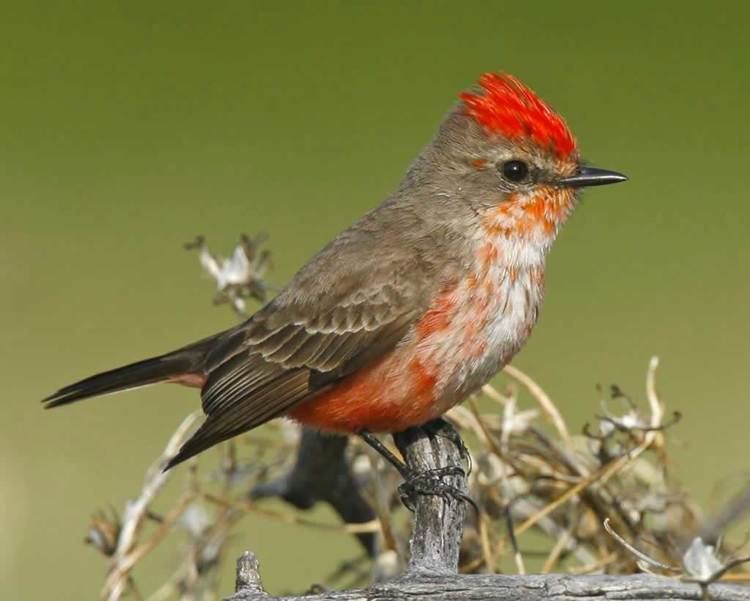 | ||
Similar Bird, Tyrant flycatcher, Kingbird, Tropical kingbird, Fork‑tailed flycatcher | ||
Acrylic painting time lapse of a vermilion flycatcher
The vermilion flycatcher or common vermilion flycatcher (Pyrocephalus obscurus) is a small passerine bird in the Tyrannidae, or tyrant flycatcher family. Most flycatchers are rather drab, but the vermilion flycatcher is a striking exception. It is a favorite with birders, but is not generally kept in aviculture, as the males tend to lose their vermilion coloration when in captivity.
Contents
- Acrylic painting time lapse of a vermilion flycatcher
- 2016 05 vermilion flycatcher pair builds a very special nest watch in 4k
- Taxonomy
- Description
- Distribution and habitat
- Feeding
- Breeding
- Conservation and threats
- References
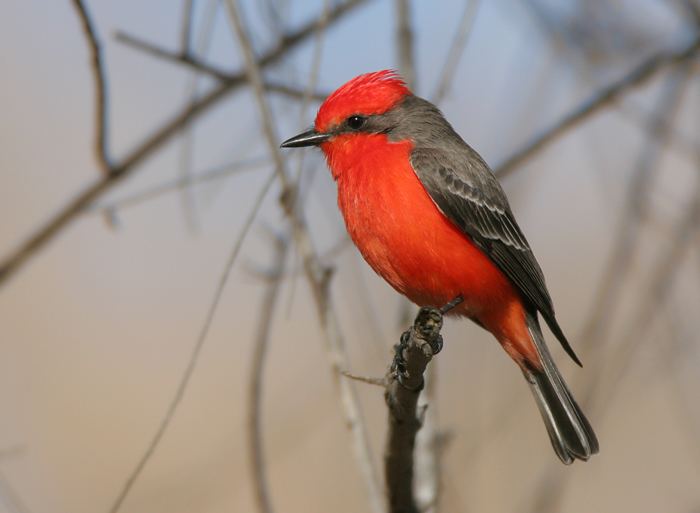
2016 05 vermilion flycatcher pair builds a very special nest watch in 4k
Taxonomy
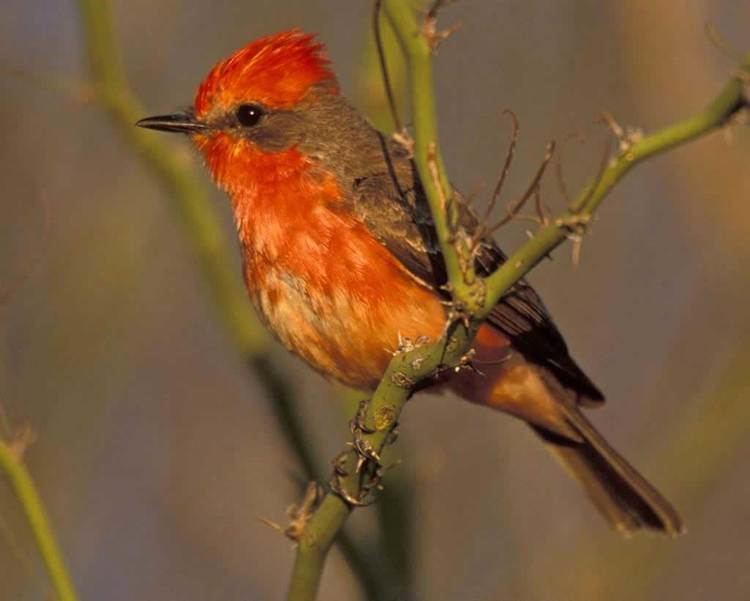
In 1839, John Gould created the current genus Pyrocephalus for the vermilion flycatcher. While it is considered a monotypic genus by some authorities, other taxonomists (including the International Ornithologists' Union, believe that up to three of the vermilion flycatcher subspecies (Darwin's, San Cristóbal, and Scarlet flycatcher merit species status.
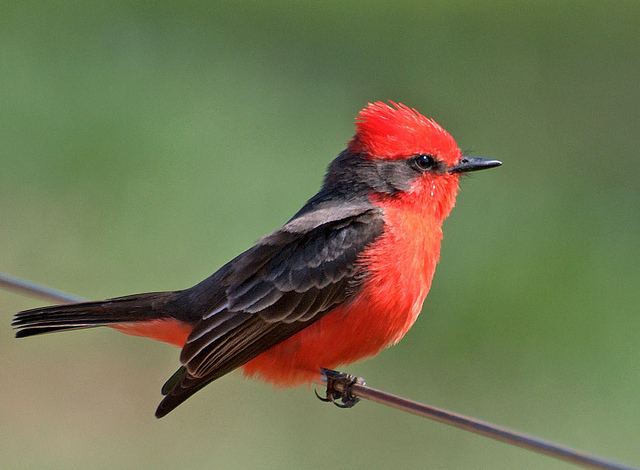
There are 9 widely recognized subspecies, which differ primarily in the color and saturation of the male's plumage and the color and amount of streaking of the female's. The boundaries between some of the subspecies are not well defined:
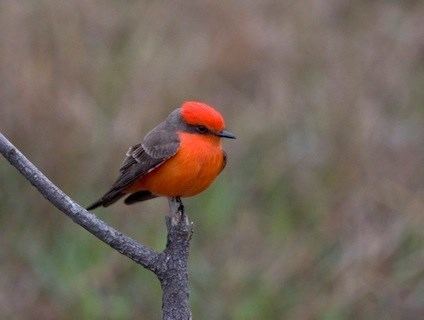
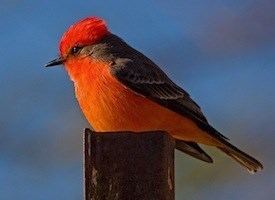
The validity of a tenth subspecies, P. o. major, has been questioned, as its breeding grounds have never been found.
Description
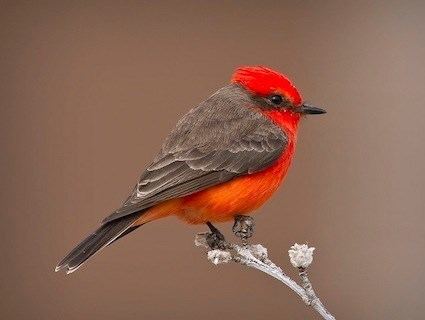
The vermilion flycatcher is a small bird, measuring 13–14 cm (5.1–5.5 in) in length, with a mass between 11 and 14 g (0.39 and 0.49 oz). It strongly dimorphic; males are bright red, with dark brown plumage. Females have a peach-colored belly with a dark gray upperside, and are similar to Say's phoebe.
Distribution and habitat
Vermilion flycatchers generally prefer somewhat open areas, and are found in trees or shrubs in savannah, scrub, agricultural areas, riparian woodlands, and desert as well, but usually near water. Their range includes almost all of Mexico; it extends north into the southwestern United States, and south to scattered portions of Central America, parts of northwestern and central South America. It has ranged as far north as Canada.
Feeding
The flycatchers feed mostly on insects such as flies, grasshoppers and beetles. These are usually taken in mid-air, after a short sally flight from a perch. It is an opportunistic feeder, and has been observed eating small fish.
Breeding
The vermilion flycatcher's nest is a shallow cup made of small twigs and soft materials, lined with hair; the nest's rim is often covered with lichen. Typically located within 6 ft (1.8 m) of the ground, the nest is placed in the horizontal fork of a tree branch. They lay two or three whitish eggs in a nest made of twigs, stems and roots, and lined with hair. The eggs are incubated for around two weeks by the female and the young are ready to leave the nest 15 days after hatching.
Conservation and threats
Because of its enormous range and sizable population—estimated as ranging between 5,000,000 and 50,000,000 individuals—the vermilion flycatcher is listed as a species of least concern by the International Union for the Conservation of Nature, despite the fact that its overall numbers are declining.
The flycatcher is also an occasional victim of brood parasitism by brown-headed cowbirds.
